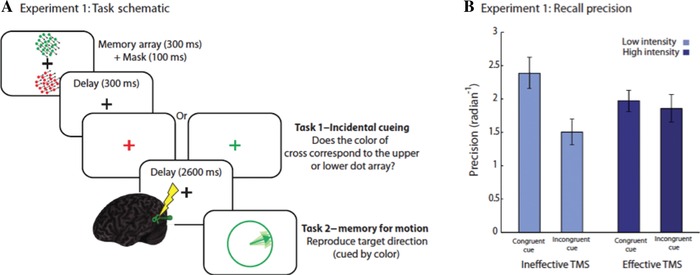Figure 3.

Manipulation of representational states in working memory. (A) Schematic of a task manipulating states of items in WM for motion direction. Participants had to remember the direction of two random dot kinematograms (RDK): one red and the other green. During the delay, they were “incidentally cued” by being asked to make a judgment orthogonal to the memory task: the location of one of the items had to be reported, bringing it into the focus of attention or privileged state. TMS was then applied to the visual area MT before recall for one of the RDKs being probed. If this was the same color as the incidental cue (congruent condition), recall was better than if it was not (incongruent). (B) Recall precision following TMS was reduced for the item in the privileged state, while performance for the unprivileged items actually improved.22
